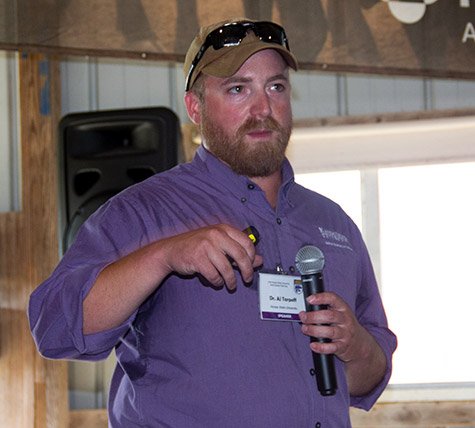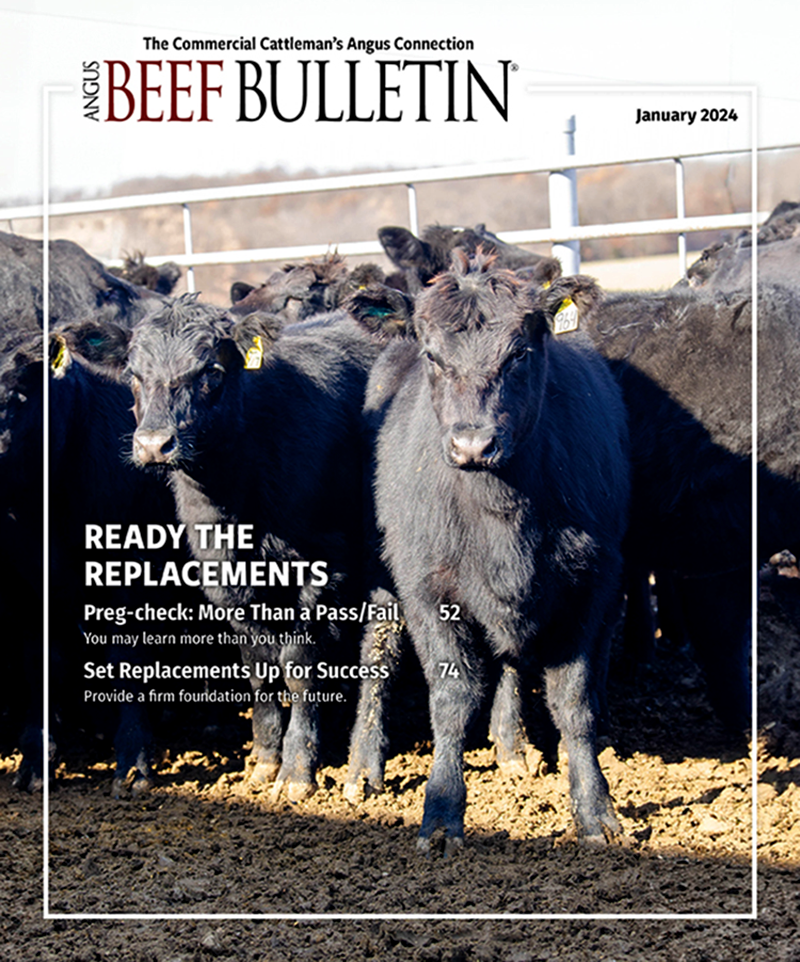Not Alphabet Soup
Veterinarian highlights prevalent loss-causing diseases that don’t involve any acronyms.
 |
Newly poured concrete is like little daggers to cattle hooves and acts like sandpaper. Facilities, footing, handling and shipping are frequent causes of toe issues, AJ Tarpoff says. |
Bovine respiratory disease (BRD) gets a lot of attention in the cattle business. Rightly so, but there are other less-diagnosed health issues that could be affecting feedlot cattle. No matter the ailment, early diagnosis and treatment equals success. With cattle, though, most illnesses are difficult to diagnose. Lameness issues are costly — 16% of all treatments, 5% of deaths, and 70% of railer carcasses at slaughter, says AJ Tarpoff, Kansas State University assistant professor and extension beef veterinarian, citing Griffin et. al. 1993 Extension report Feedlot Lameness.
Lameness
“Lameness may be the biggest opportunity for improvement in the industry,” he says. It causes significant losses in production and is understandably a welfare concern.
Seventy percent of lameness stems from the foot, he says, noting that’s mostly in the back feet.
Tarpoff explains that cattle fight to get to the middle of the group when threatened or sorted. The powerful hind legs are used to push as the cattle mill about. The toes of the feet, especially the rear feet, may be ground down enough for infection to set in.
Newly poured concrete is like little daggers to cattle hooves and acts like sandpaper, he says. Standing for long periods on concrete probably doesn’t help, either. Facilities, footing, handling and shipping are frequent causes of toe issues.
If cattle are standing with their back leg crossed or a very abnormal posture, that is a big sign of toe issues, Tarpoff shares. The only true way to diagnose the issue is to pick up the foot, wash it and examine it to determine the cause.
“Can you tell the difference between a lower- and an upper-leg lameness? It’s often hard to tell,” Tarpoff admits.
Cattle walk differently to protect the toe. Toe abscesses do not always appear the same as other types of lameness. Use hoof testers to find the affected toe. Tarpoff says you may be able to pare down to the abscess with a hoof knife. Most of the time, you will need to take the tip of the toe off with hoof nippers to allow drainage. Don’t trim enough to cause bleeding, he warns. Damaged toes may require extended therapy.
— AJ Tarpoff
Check the flooring in your facilities and provide nonabrasive footing in alleys and working areas, he suggests. Calm handling is always a necessity.
Other lameness culprits are septic arthritis and foot rot. Septic arthritis may occur after initial respiratory disease, and is caused by Histophilus somni and Mycoplasma bovis. Tarpoff says he routinely sees lameness about one week following treatment for BRD. He emphasizes that septic arthritis is not foot rot.
Arthritic recovery takes a long time. Mycoplasma has no cell wall, so don’t use penicillin or ceftiofur. Bacteria grow, but the inflammation remains, he explains.
Early foot rot starts at the backside of the hoof, and is usually found due to swelling in the back of the hoof below the dewclaw.
Digestive diseases
While on the inside, digestive issues can be mistaken for BRD. Tarpoff says all calves entering a feedlot have some level of coccidiosis in them. Stress is the biggest factor that brings it out. The biggest stress triggers are winter weather, being freshly weaned, and new arrival as stockers and feeders.
Bright red bloody diarrhea is easier to diagnose, with additional signs of a raised tailhead and flexing rectum. Sanitation and reduced stress can prevent this. For treatment and prevention, Tarpoff suggests several approved products such as amprolium, sulfas, decoquinate, monensin and lasalocid.
Acidosis occurs when the rumen’s pH is less than 5. It can permanently damage the rumen when too much starch is consumed. It can look like BRD in the early stages due to the depression and dehydration.
While BRD is a big deal, don’t forget that other ailments may be the issue.



